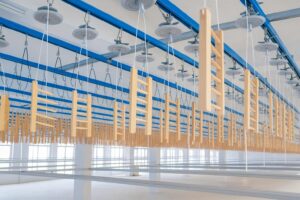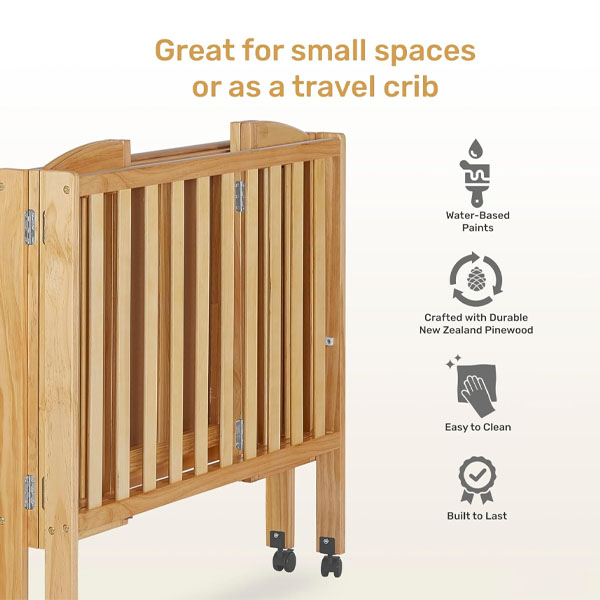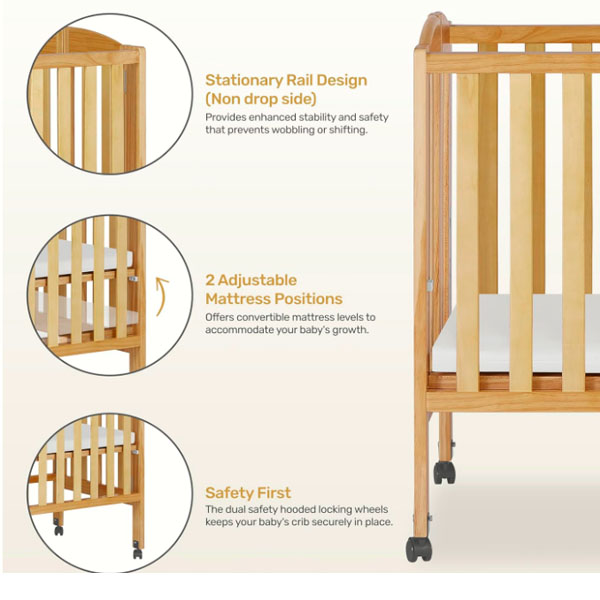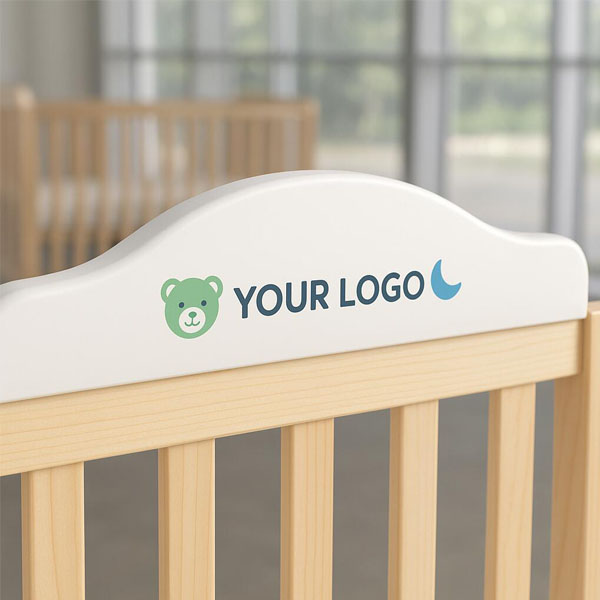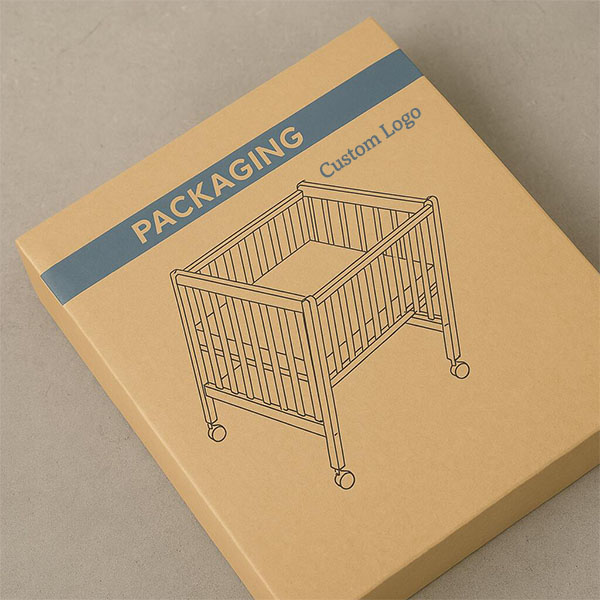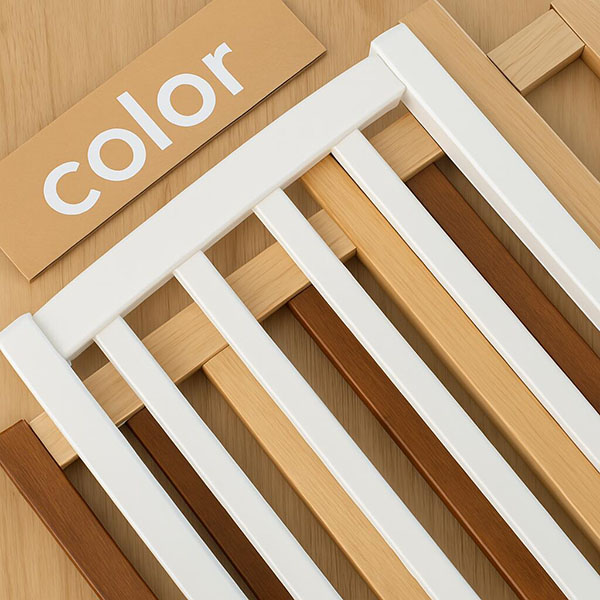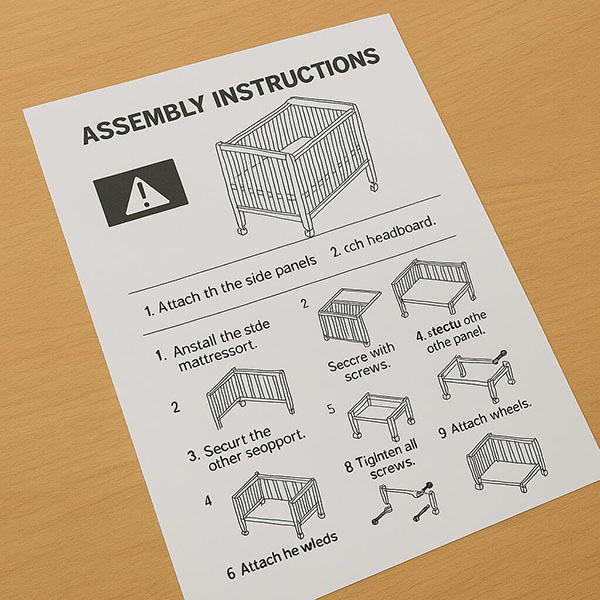4 Most Asked Questions About Baby Moses Baskets
Newborn sleeping options overwhelm new parents. Safety, comfort, and portability all matter—and that’s why Moses baskets are gaining popularity fast.
Baby Moses baskets are portable, cozy sleeping spaces for newborns, designed to offer a snug, safe, and stylish alternative to traditional bassinets.
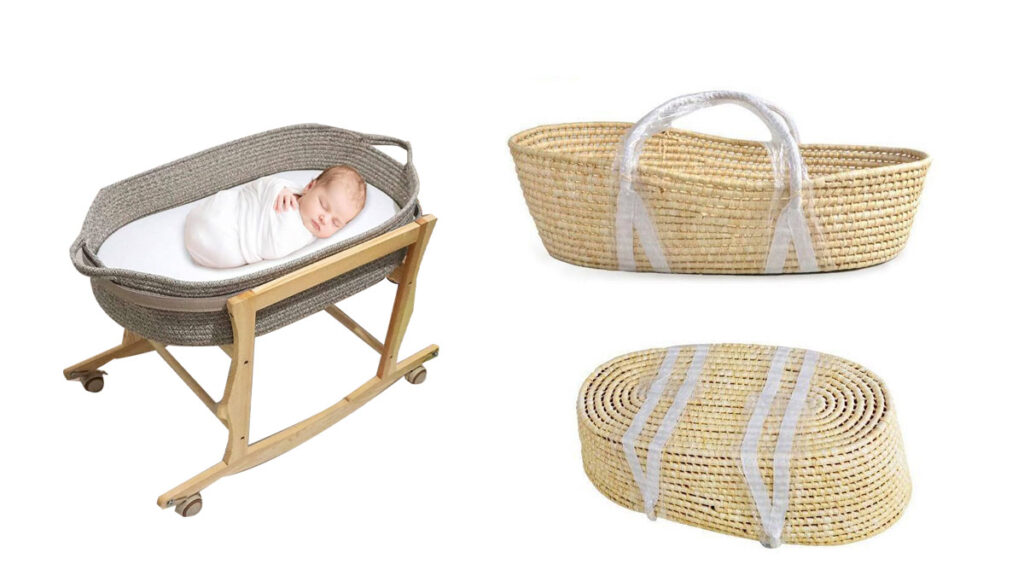
If you’re here, you’re probably curious, cautious, or both. I was too, before I used one. Let’s walk through the four questions parents ask the most.
Are Moses baskets safe for newborns?
Parents worry about safety first. Especially with all the newborn sleep guidelines out there, it’s easy to feel overwhelmed.
Yes, Moses baskets are safe when used correctly—on flat surfaces, without extra bedding, and following sleep safety guidelines like placing baby on their back.
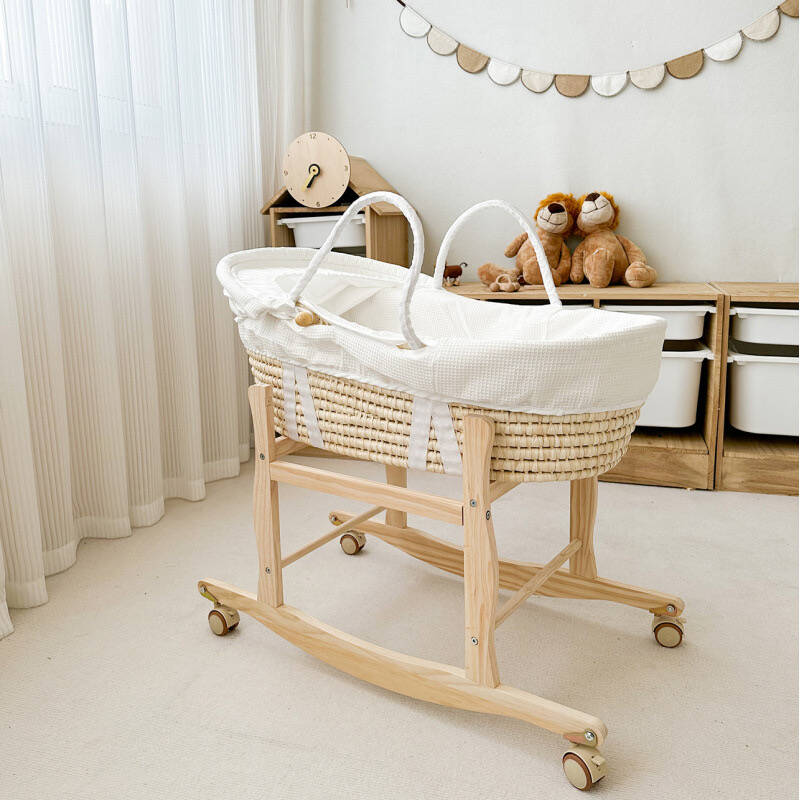
What makes a Moses basket safe?
The American Academy of Pediatrics (AAP) emphasizes firm mattresses, fitted sheets, and zero clutter in sleep spaces. Moses baskets, when used properly, can meet these standards. Look for baskets that are:
- Made of natural, breathable materials
- Equipped with a firm, flat mattress
- Free of pillows, blankets, or bumpers
- Placed on stable surfaces (floor or certified stand)
| Safety Feature | Must-Have? | Why It Matters |
|---|---|---|
| Firm Mattress | ✅ | Reduces risk of suffocation |
| No extra bedding | ✅ | Prevents SIDS and overheating |
| Breathable materials | ✅ | Keeps air flowing to avoid overheating |
| Certified stand (optional) | ✅ if elevated | Ensures stability and prevents tipping |
Are all Moses baskets created equal?
Not at all. Some are decorative. Others are fully functional and safe for sleep. The key is knowing how to tell the difference.
- Woven palm or maize baskets are traditional, but not always sturdy.
- Organic cotton or felt options can be more breathable and hypoallergenic.
- Plastic or synthetic options may last longer, but could trap heat.
The golden rule? Always double-check safety certifications and user reviews.
How long can a baby use a Moses basket?
Newborns grow faster than most parents expect. One minute, they’re curled up like a peanut. The next, they’re rolling and kicking.
Most Moses baskets are suitable until your baby is 15–20 lbs or begins to roll over—usually around 3 to 4 months old.
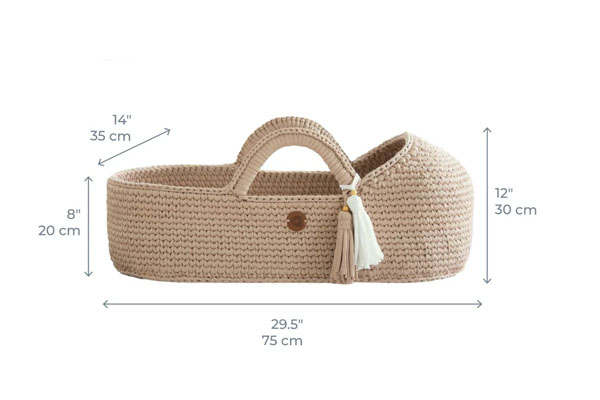
What signs show it’s time to transition?
You should stop using a Moses basket when:
- Your baby starts rolling or pushing up
- They exceed the weight limit listed by the manufacturer
- They no longer fit comfortably or start looking cramped
| Baby Behavior | Action Needed |
|---|---|
| Rolling over | Transition out |
| Pushing up on hands | Transition out |
| Legs hanging over edge | Transition soon |
| Still & calm sleeper | OK to continue use |
Always follow your baby’s development—not just the calendar.
What to use after the Moses basket?
Once your baby outgrows the basket, you can move them to:
- A crib (standard or mini)
- A bedside bassinet (if still within weight range)
- A pack and play with a flat sleeping surface
Your transition depends on your space, budget, and how your baby sleeps.
Are Moses baskets portable enough for daily use?
Flexibility matters, especially during the newborn stage when you want your baby close. Portability gives parents peace of mind and convenience.
Yes, Moses baskets are lightweight and portable, making them ideal for moving your baby from room to room during the day.
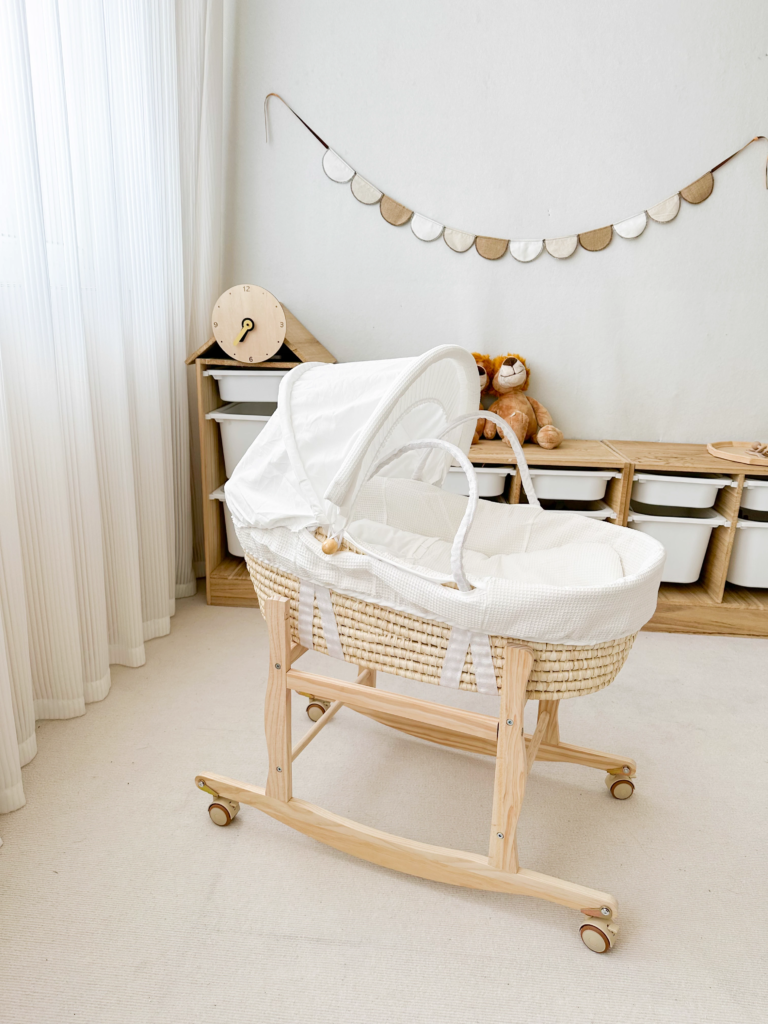
What makes a Moses basket easy to move?
Moses baskets with built-in handles are designed for portability. But there are a few tips:
- Move only when the baby is not inside to avoid accidents
- Choose baskets with strong, secure handles
- Pair with a folding stand if you want elevation
| Feature | Portable Advantage |
|---|---|
| Built-in handles | Easy to carry between rooms |
| Lightweight material | Less strain when moving |
| Folding stand | Makes for flexible setup |
What if you travel often?
If you travel a lot, Moses baskets can be your best friend. I once brought mine on a weekend trip, and it saved us from hotel crib nightmares.
Some options even come with:
- Travel bags
- Washable liners
- Detachable stands
Look for “travel Moses baskets” for more durable and compact versions.
Are Moses baskets worth the cost?
With so many baby products out there, it’s easy to question what’s necessary and what’s not. Spoiler: not everything on your registry matters.
Yes, if you’re looking for a stylish, portable, and short-term sleeping solution, Moses baskets are totally worth it.
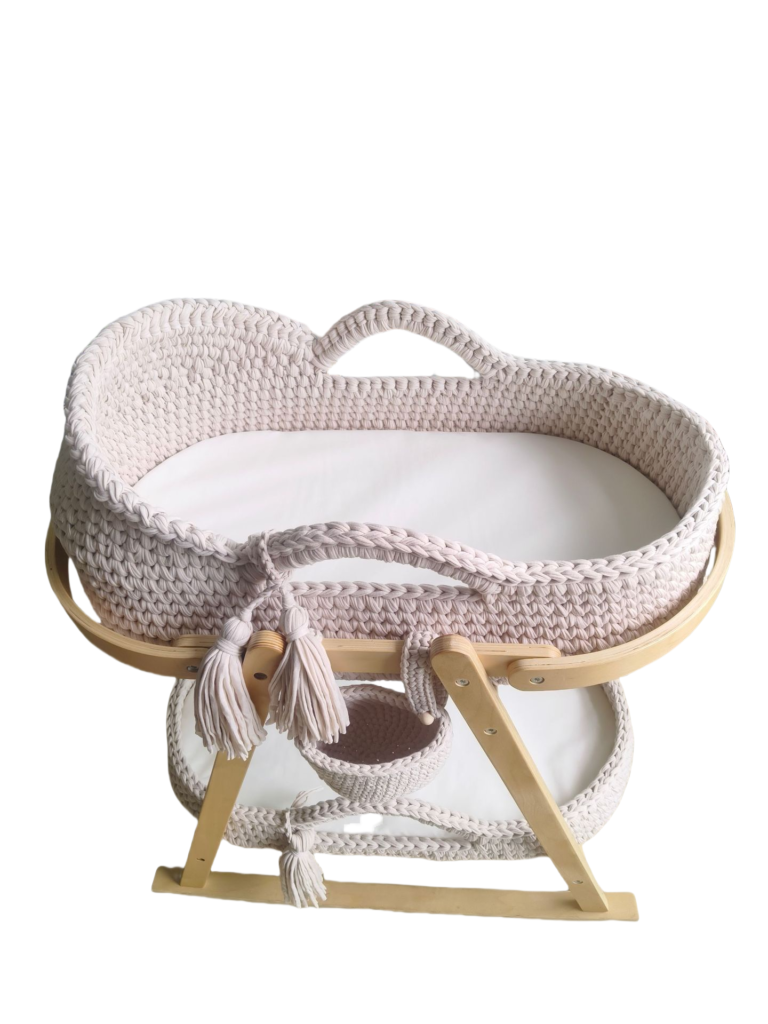
What’s the price range?
You can find Moses baskets ranging from $60 to over $300. Price varies based on:
- Materials (natural vs. synthetic)
- Brand reputation
- Whether a stand is included
- Aesthetic design or handmade touches
| Price Range | What You Get |
|---|---|
| $60–$100 | Basic model, minimal padding |
| $100–$200 | Better materials, simple stand |
| $200–$300+ | Designer looks, organic options, luxury finishes |
How to choose the right one?
Ask yourself:
- Do I want it just for the first few months?
- Will I move it often between rooms?
- Do I need it to match the nursery?
- Is eco-friendliness a priority?
I personally chose a mid-range option with organic cotton lining. It felt safe, easy to clean, and matched our minimalist nursery. No regrets.
Conclusion
Moses baskets are safe, stylish, and practical for newborns—especially in those precious early weeks.

